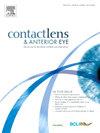Nanotechnology-based non-invasive strategies in ocular therapeutics: Approaches, limitations to clinical translation, and safety concerns
IF 4.1
3区 医学
Q1 OPHTHALMOLOGY
引用次数: 0
Abstract
The eye is a highly sensitive and vital component that significantly affects human quality of life. Diseases that affect the eye are major contributors to visual impairment and blindness and can have a profound effect on an individual’s well-being. Ocular drug delivery is challenging because of physiological and anatomical barriers. Invasive Intravitreal administration is primarily used for the treatment and management of posterior segmental disease. However, frequent intravitreal administration is associated with adverse effects. Furthermore, topical administration results in less than 5% ocular bioavailability, leading to a void in the safe and efficacious management of posterior segment diseases. Nanocarrier-based systems have been well explored as ocular therapeutics to overcome the sub-therapeutic management attributed to conventional eye drops and physiological and anatomical barriers. Since the first report of nanoparticles to date, the nanocarrier system has come a long way with the simplicity and versatility offered by the system. Significant progress has been made in the development of noninvasive nanocarrier systems and their interactions with the ocular surface. The nanocarrier system enhances precorneal retention, limits nontherapeutic absorption, and offers controlled drug release. This review aims to provide an overview of the recent advancements in noninvasive nanocarrier-based topical ocular drug delivery systems, including their interaction with the ocular surface, the barriers to their translation to clinical settings, and the associated scale-up challenges.

基于纳米技术的非侵入性眼科治疗策略:方法、临床转化的局限性和安全性问题。
眼睛是一个高度敏感和重要的组成部分,显著影响着人类的生活质量。影响眼睛的疾病是造成视力障碍和失明的主要原因,并可能对个人的健康产生深远的影响。由于生理和解剖障碍,眼部给药具有挑战性。侵入性玻璃体内给药主要用于治疗和管理后节段疾病。然而,频繁的玻璃体内给药与不良反应有关。此外,局部给药导致不到5%的眼生物利用度,导致安全有效地治疗后节段疾病的空白。基于纳米载体的系统已经被很好地探索作为眼部治疗方法,以克服由于传统滴眼液和生理和解剖障碍造成的亚治疗管理。自从纳米颗粒的第一篇报道以来,纳米载体系统已经取得了长足的进步,其简单性和通用性都得到了体现。非侵入性纳米载体系统及其与眼表相互作用的研究取得了重大进展。纳米载体系统增强角膜前保留,限制非治疗性吸收,并提供控制药物释放。本文综述了基于纳米载体的非侵入性眼部局部给药系统的最新进展,包括它们与眼表的相互作用,转化为临床环境的障碍,以及相关的扩大规模的挑战。
本文章由计算机程序翻译,如有差异,请以英文原文为准。
求助全文
约1分钟内获得全文
求助全文
来源期刊

Contact Lens & Anterior Eye
OPHTHALMOLOGY-
CiteScore
7.60
自引率
18.80%
发文量
198
审稿时长
55 days
期刊介绍:
Contact Lens & Anterior Eye is a research-based journal covering all aspects of contact lens theory and practice, including original articles on invention and innovations, as well as the regular features of: Case Reports; Literary Reviews; Editorials; Instrumentation and Techniques and Dates of Professional Meetings.
 求助内容:
求助内容: 应助结果提醒方式:
应助结果提醒方式:


